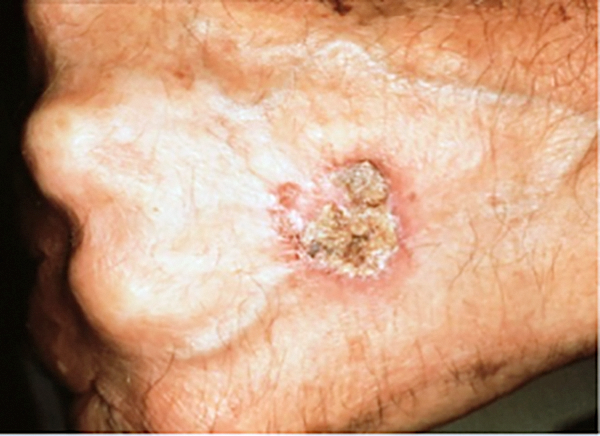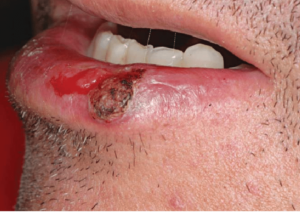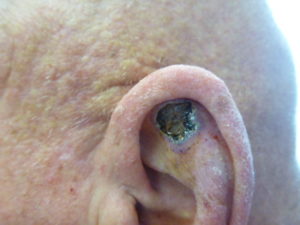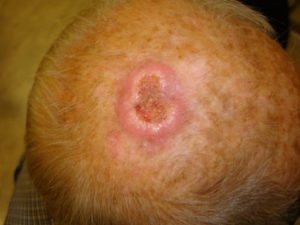
Squamous cell carcinoma of the skin is a common form of skin cancer that develops in the squamous cells that make up the middle and outer layers of the skin.
Most squamous cell carcinomas of the skin result from prolonged exposure to ultraviolet (UV) radiation, either from sunlight or from tanning beds or lamps. Avoiding UV light helps reduce your risk of squamous cell carcinoma of the skin and other forms of skin cancer.
Symptoms
Squamous cell carcinoma of the skin most often occurs on sun-exposed skin, such as your scalp, the backs of your hands, your ears or your lips. But it can occur anywhere on your body, including inside your mouth, the bottoms of your feet and on your genitals.



Signs and symptoms of squamous cell carcinoma of the skin include:
- A firm, red nodule
- A flat sore with a scaly crust
- A new sore or raised area on an old scar or ulcer
- A rough, scaly patch on your lip that may evolve to an open sore
- A red sore or rough patch inside your mouth
- A red, raised patch or wartlike sore on or in the anus or on your genitals
When to see a doctor
Make an appointment with your doctor if you have a sore or scab that doesn’t heal in about two months or a flat patch of scaly skin that won’t go away.
How Is Squamous Cell Cancer Diagnosed?
Your doctor will first perform a physical exam and inspect any abnormal areas for signs of SCC. They’ll also ask you about your medical history. If SCC is suspected, your doctor may decide to take a biopsy to confirm the diagnosis.
A biopsy usually involves removing a small portion of the affected skin. The skin sample is then sent to a laboratory for testing.